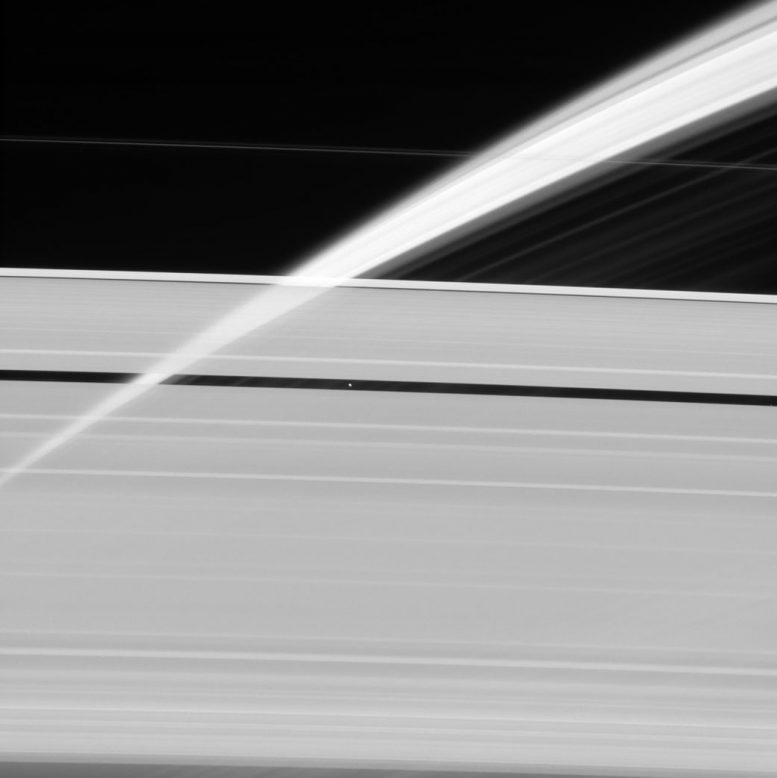
The rings of Saturn, composed of icy particles, create a translucent veil. A small moon named Pan orbits within the Encke Gap in the A ring. Credit: NASA/JPL-Caltech/Space Science Institute
Saturn’s rings, made of countless icy particles, form a translucent veil in this view from NASA’s Cassini Spacecraft.
Saturn’s tiny moon Pan, about 17 miles (28 kilometers) across, orbits within the Encke Gap in the A ring. Beyond, we can see the arc of Saturn itself, its cloud tops streaked with dark shadows cast by the rings.
This image was taken in visible light with the Cassini spacecraft narrow-angle camera on February 12, 2016, at a distance of approximately 746,000 miles (1.2 million kilometers) from Pan.
The Cassini spacecraft ended its mission on September 15, 2017.
The Cassini mission is a cooperative project of NASA, ESA (the European Space Agency) and the Italian Space Agency. The Jet Propulsion Laboratory, a division of the California Institute of Technology in Pasadena, manages the mission for NASA’s Science Mission Directorate, Washington. The Cassini orbiter and its two onboard cameras were designed, developed and assembled at JPL. The imaging operations center is based at the Space Science Institute in Boulder, Colorado.









Be the first to comment on "Cassini Image of Saturn’s Icy Rings"